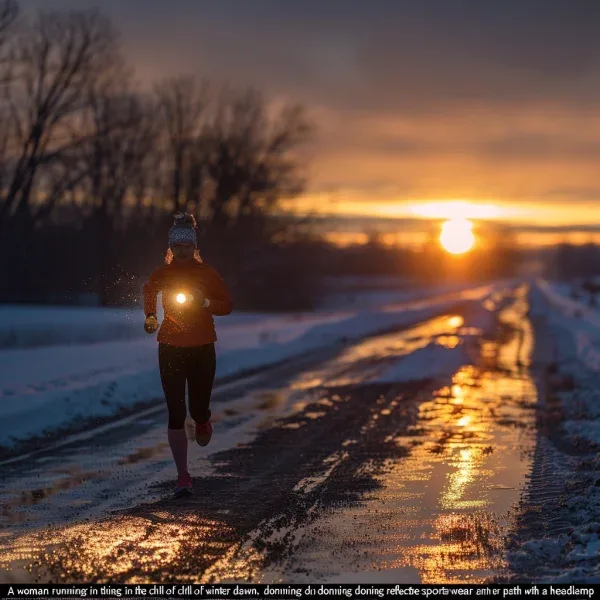by Gemma Delaney

In an unprecedented year marked by stay-at-home orders and reduced social gatherings, many have shifted their gaze towards maintaining personal health and wellness. Consequently, this winter isn’t seeing the usual hibernation of sneakers but an unexpected surge of new joggers. But, as thrilling as this fitness trend is, it also rings an alarm bell for the potential of a great many injuries.
This year has been anything but typical. With most cozy annual gatherings being postponed or cancelled, keeping physically active has become a major focus for many, and hence we find ourselves in a winter quite unlike any other. This transition has led to a striking uptick in the sale of running gear, creating a wave of newfound joggers, as per observations by health shops worldwide.
A startling observation is that an estimated 68% of these new entrants have not sought professional guidance for their newfound hobby. Ignorance can be detrimental, particularly when paired with the harsh winter elements and limited visibility. This is why several fitness brands have taken it upon themselves to create awareness about safety measures for running in winter.
While we celebrate the increase in individuals making strides towards a healthier future, defeating the winter blues with the runners’ high and reaping the enormous psychological and physiological benefits, the lack of guidance is concerning. Studies show that running enthusiasts who are still finding their rhythm suffer injuries twice more frequently than seasoned joggers.
- Warm-Up, Cool Down: Do not underestimate the power of warming up before and cooling down after your run, especially during winter. A few minutes of low-intensity cardio and dynamic stretching, before and after your run, could help avoid injuries and speed up recovery.
- Pick Your Path: Choose your course wisely, paying special attention to areas with poor lighting, reduced pedestrian access, and potential trip hazards.
- Loop it Safe: When it’s dark and cold, it might be a better idea to stick to smaller, familiar running loops as they allow for quick and easy exits in case of an injury.
- Gauge the Weather: Dress appropriately for the temperature and watch for high winds. Running into the wind at the start of your run can help you stay warm on your way home.
- Equip Yourself: Invest in high-visibility running gear and consider using a headlamp. This is crucial if you prefer running in the evenings or early mornings.
- Right Shoes for the Run: Your footwear is important. To prevent slipping and injury, ensure your shoes are designed for winter running.
- Hydrate: Winter runs can dehydrate you just as much as summer ones can. Stay hydrated throughout your run.
- Mind Your Breathing: Establish a rhythmic breathing pattern to feel more in control and ease your run.
- Vary Your Training: Keep your training interesting and effective by incorporating different types of runs, such as interval, fartlek, and hill runs. Increase your mileage gradually and cross-train to avoid overworking certain muscle groups.
- Find a Running Buddy: Running with a friend is not just fun but also safer.
Remember: while it’s exciting to commit to a healthier way of living and to embrace running as a fitness routine, it’s imperative to make safety your priority. Stay prepared, be aware of your surroundings, and don’t hesitate to ask for expert advice. Education is the key to avoiding injuries on this new journey to a healthier you.
new runners, winter running, injury prevention, safety measures, warm up cool down, running path, running gear, hydration, breathing during running, training variety, running buddy
Leave a Reply